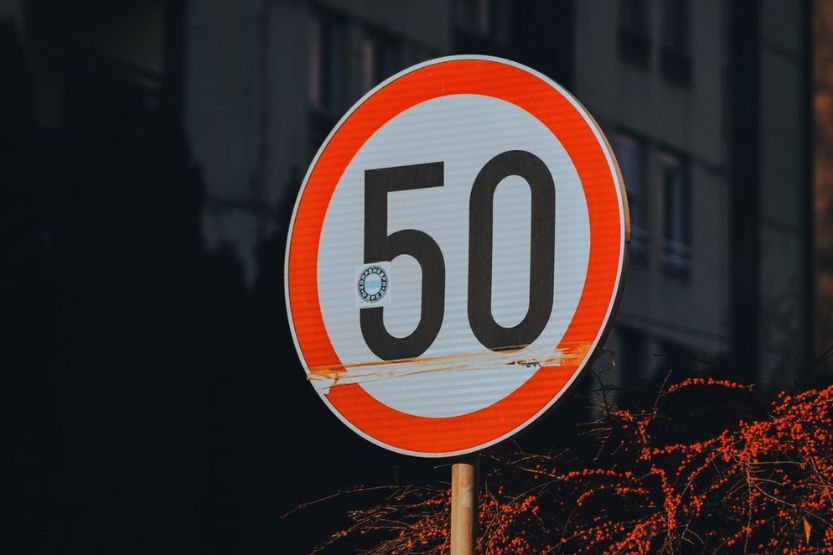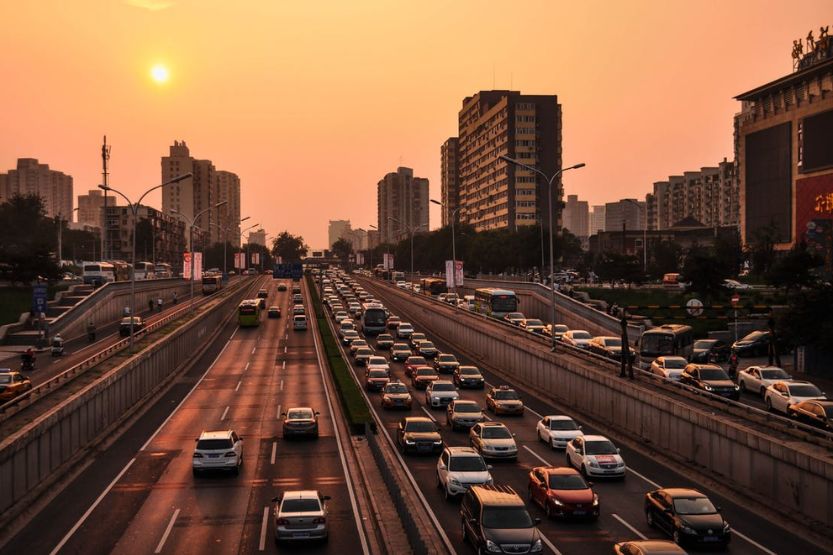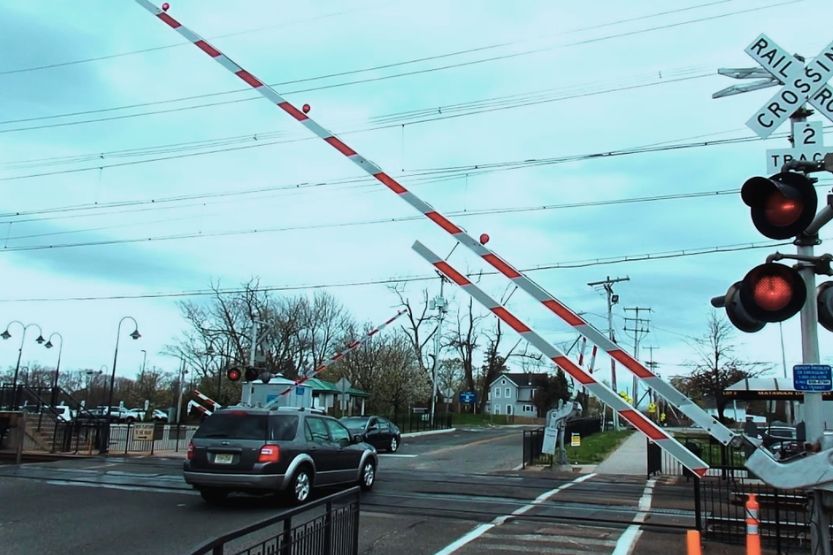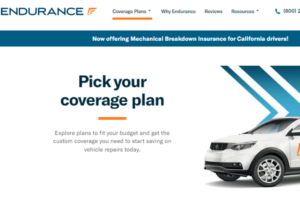Traffic-related fatalities and serious injuries are not just accidents. Public awareness can help a great deal in eliminating such incidents. The risk always increases with speed, whether accelerating too quickly or not allowing yourself enough time to stop. So, what is a safe rate to drive one’s car?
It all depends on the speed limits set in your area of residence. There are also different types of speed limits, such as statutory speed limits, which range from 25 mph to 70 mph, posted speed limits, and special conditions speed limits which apply to school and work zones.
There are also established speed limits that follow the recommendations of the MUTCD.
Read on to learn more about safety speeds and how to drive safely and responsibly.
How to Determine the Safest Speed to Drive Your Car

Speed limits set all the expectations for drivers and other road users. They safeguard drivers, motorists, pedestrians, and bicycles who use the road.
Ironically enough, they can also cause annoyance and confusion for some people. For instance, not all drivers want to travel at the same speed, and some might not fully understand why the speed limit varies on a particular road.
Moreover, some worry that traffic is moving too quickly through their local communities. So, to determine what a safe speed is, you must first understand the different types of speed limits and the terminology used to describe them.
Types of Speed Limits
1. Statutory Speed Limits
US state legislatures set statutory speed restrictions for particular types of roads, such as interstates, rural highways, and urban streets, which might vary from state to state.
They are enforced by road law and still apply even if there is no posted speed limit sign. Statutory speed restrictions include the following:
- 25 miles per hour in residential or school zones,
- 55 miles per hour on country roads and,
- 70 miles per hour on rural Interstates.
2. Posted Speed Limits
Also known as regulatory speed limits, they are speed restrictions posted along the road and governed by law.
A posted speed limit may be the same as the statutory speed determined by the state legislature, or it may be altered from the statutory speed limit by a municipal, county, or state transportation agency.
Some municipalities and counties will impose a uniform speed limit on all highways under their control. These restrictions are typically placed near county or city boundaries. The posted speed limit may be different from the established statutory speed limit.
The posted speed limit supersedes the statutory speed limit and is established using an engineering speed study.
3. Special Conditions Speed Limits
School Zone Limits
Several areas have speed limits during the hours kids go to and from school. Most US states have school zone speed limits of 15 to 25 mph in urban and suburban regions.
When you are near schools, look out for pedestrians and cyclists. Make sure you follow the instructions when crossing guards or school safety patrols. Before driving on, stop to let the crossing guard cross the street safely and move to the side of the road,
You also watch out for kids crossing the street and school buses. Some school buses make a yellow light flash as they approach a stop to let kids off. The flashing yellow lights warn us to slow down and get ready to stop.
It would help if you stopped in either direction when the bus flashes red lights (located at the top front and back of the bus) so that the kids can cross the street safely.
Also, note that according to the law, you must remain stopped as long as the red lights are flashing.
Work Zone Limits
Work zone speed limits exist as part of the traffic control strategy for the area to ensure the safe and effective passage of vehicles through a construction zone. The following factors may affect the speed limits in work zones:
- The posted speed limit when there isn’t a work zone,
- Where the work zone is,
- Where the workers are in relation to traffic,
- The sort of traffic control, such as concrete barriers, barrels, or cones,
- The difficulty of the work area (e.g., lane shifts, narrowed lanes).
Work zones are dangerous for both working and driving. Because of this, even when there are no workers or work vehicles in the area, you will get a double fine if you speed up and go above the limit.
Expect to encounter a work zone anywhere you drive, so you must stop or drastically reduce your speed.
Lane changes or lane closures are both possible in traffic. Workers and work vehicles may be present on or close to your driving lane.
You might also see a sign that says, “Flagger ahead.”
A flagger is an employee who motions for you to stop, proceed slowly, or change lanes. Because a flagger has the same authority as a sign, disobeying their instructions could result in a ticket, so make sure to follow their instructions.
Variable Speed Limits
Changeable message signs (CMS) with variable speed limits are placed where the posted speed limit is reduced by more than 10 mph due to road conditions. These occurrences often result from bad weather, heavy traffic, accidents, and construction zones.
Advisory Speeds
They are non-regulatory speeds posted for a brief period or an isolated section of a road, such as a sharp curve or an exit ramp, to inform drivers of a safe driving speed. They are per the guidelines in the “Manual on Uniform Traffic Control Devices” or MUTCD.
4. Established Speed Limits
Following the recommendations provided in the MUTCD, state, and local transportation agencies carry out engineering speed studies and set the appropriate speed limits accordingly.
Moreover, practitioners have access to USLIMITS2, a supplementary web application that offers an unbiased second opinion and supports decisions regarding setting speed limits.
To achieve the desired speed for a particular roadway, agencies occasionally may need to implement speed management countermeasures, such as in areas with high pedestrian and bicycle activity.
Here is more information on speed management countermeasures as illustrated by the Federal Highway Administration.
Tips on How to Drive Safely

1. Leave Adequate Room for the Car in the Front
Rear-end collisions occur in four of every ten accidents, usually due to someone following too closely (tailgating). Give yourself enough space from the car in front of you so you can safely stop if it suddenly stops.
2. Brake Gently When Stopping or Turning
Brake gently and early when you are getting ready to stop or turn. It gives drivers following you ample notice that you intend to reduce your speed.
Use the two-second rule to create a good “space cushion.” Choose something like a sign, tree, or overpass close to or above the upcoming road.
“One thousand one, one thousand two,” slowly count as the car in front of it passes. If you arrive at the same object before completing the count, you are too close to the vehicle in front of you.
Increase the count to at least three or four seconds in inclement weather and when following large trucks to allow for more space.
3. Move to a Different Lane When a Driver Is Tailgating You
If a driver is tailgating you, move to a different lane or slow down and pull over so the driver can pass. Use your signal when driving off the road and back on it.
4. Avoid Unnecessary Braking
Avoid abrupt or unnecessary braking, as this could startle the driver in front of you and lead to road rage.
5. Leave an Escape Space to Your Left and Right
Leave some “escape” space to your left and right if you need to change lanes or quickly pull over to avoid a hazard.
6. Always Pay Attention to the Signs
Some signs can direct you away from the work zone. Try to take a different route if you know a work zone ahead.
Flashing signs, arrows, or signs that warn that a lane is closed indicate that you are approaching a work zone and should merge into the proper lane as soon as it is safe. Don’t try to enter the open road by speeding to the end of the closed lane.
If you switch to the proper lane as soon as you see it, you will drive more steadily, effectively, and safely. When a sign says, “Road Work 1,500 feet,” you should slow down because your car will arrive at the indicated location in 17 seconds, given you’re going 60 mph.
The size of the work zone may change as the project goes on, either in terms of size or location on the road. They might be nearby even if you don’t see the workers immediately after the warning signs. Follow the signs’ instructions until the one that says the work zone is complete.
Again, what is a safe speed to drive your car? If there’s no posted limit, you should go no more than 55 mph or 88 km/h. Always keep your actual speed below the speed limit.
How to Prevent Deer Collisions in the Future
How to Drive Safely in Roundabouts
A roundabout is a round intersection with a narrow diameter, which forces drivers to reduce their speeds, typically to 30 mph or less. Studies show that roundabouts can reduce collisions at an intersection compared to intersections with stop signs or traffic signals.
Roundabouts are becoming more prevalent in New York state and other states:
1. Look for Relevant Street and Direction Signs
Look for the relevant street and direction signs as you approach the roundabout. You can use this to determine which exit to take. These signs are usually there along the side of the road before you arrive at the roundabout entrance.
2. Go Slowly as You Approach the Roundabout
When you approach the roundabout, go more slowly and give way to any pedestrians and cyclists present. Additionally, you must stop for any vehicles in the roundabout ahead of you.
A stop sign or traffic light may occasionally govern your point of entry. You can enter the roundabout counterclockwise when the traffic volume permits enough room and time.
3. Stay in Your Lane
As soon as you enter the roundabout, stay in your lane until you are ready to leave. Use your right turn signal to signal your intention to switch from the “inside path” to the “outside path” or if you need to exit immediately.
4. Start to Signal Before Exiting
Remember that you should start to signal at the exit before the one you want to take. Before making a lane change or exit, look behind or in the lane next to you for any potential vehicles driving through the roundabout.
Standing Police Procedure When an Officer Flag Down a Vehicle
What Is a Safe Speed to Drive on Railroad Tracks?

1. Take Note of the Speed Limit
The speed limit is 15 mph within 100 feet of a railroad crossing where you cannot see the tracks for 400 feet in either direction. If the crossing is managed by gates, a warning signal, or a flagman, you can go faster than 15 mph.
2. Look in Both Directions
Watch out for trains while looking in both directions. Many crossings have multiple tracks, so if necessary, you may need to stop before crossing. Only do so when it is safe at designated crossings with railroad tracks.
3. Never Stop on the Railroad Tracks
Trains can run on any track, at any time, in either direction. You should wait until you can cross the paths completely if you need to stop after crossing them.
Before you stop, make sure your car has cleared the tracks.
Above all, never stop on the railroad tracks. There is always a chance of a severe injury or even dying on the track.
4. Keep an Eye Out for Other Vehicles
Keep an eye out for vehicles that must stop before crossing railroad tracks. Buses, school buses, and trucks with heavy loads are some examples of these vehicles.
5. Stop Immediately When You See a Train Coming
Keep in mind that when a train is approaching, stop no closer than 50 feet from the nearest track but no closer than 15 feet in general. If you see a train coming or hear its whistle, stop immediately.
6. Avoid Going Underneath or Around Lowered Gates
Avoid going underneath or around lowered gates. Red warning lights that flash mean you need to stop and wait. Even if the gate rises, do not cross the railroad tracks until the red lights stop flashing.
Call the posted railroad emergency toll-free number or 9-1-1 if the gates are down, but you cannot see an approaching train.
What Factors Affect Speed Safety?
Pay close attention to how well the brakes, steering, lights, tires, and horn are maintained and repaired. The key to a safe speed is a well-maintained car:
1. Brakes
If they are wet, you will need to adjust them, or you may need to replace them altogether if they seem to pull to one side.
You can use the pedal to dry them if they are wet gently. If that doesn’t work, have a mechanic examine your brakes.
2. Steering
The steering wheel shouldn’t move around too much. If your car has power steering, check the fluid level periodically. When you make a sharp turn, a whine-like sound may indicate something is wrong.
3. Lights
Keep your lights clear of snow, ice, and dirt. Replace broken lenses as soon as possible because they can generate a harmful glare for other drivers.
Above all, ensure your headlights are correctly adjusted to give you the clearest view of the road.
4. Tires
To comply with the law, your tires must have at least 2/32nds of an inch of tread. You can measure the depth of your tread using a penny.
Moreover, you should avoid driving when a tire’s cords, bumps, or bulges have been cut away, as this can affect your driving speed.
5. Horn
The horn is an essential safety gear that might be your only way to alert other drivers or pedestrians to potential issues. Get the horn fixed as soon as you can if it breaks.
Conclusion – What Is a Safe Speed to Drive Your Car
Defensive driving is the social obligation of everyone. Traffic accidents and severe road injuries are not inevitable. Public awareness and speed limits can help a great deal. They protect everyone, be it on-road or off-road. Speed limits don’t have to be a source of frustration.
There are different speed limits, including posted speed limits, statutory speed limits, and special conditions that apply to work and school zones.
Once you’re familiar with the different speed limits, you know well what defines a safe speed and what to avoid.
Read next:



![Is Bumper a Safe App? [Bumper Review] Is Bumper a safe app](https://roadsumo.com/wp-content/uploads/2024/02/Is-Bumper-a-safe-app-1-150x150.png)

![Noise When Braking at Low Speed [Causes and How To Fix] noise when braking at low speed](https://roadsumo.com/wp-content/uploads/2021/07/noise-when-braking-at-low-speed-150x150.jpg)
![Kawasaki Ninja 250 Top Speed [How Fast Can It Go?] kawasaki ninja 250 top speed](https://roadsumo.com/wp-content/uploads/2022/06/Kawasaki-Ninja-250-top-speed-150x150.jpg)


